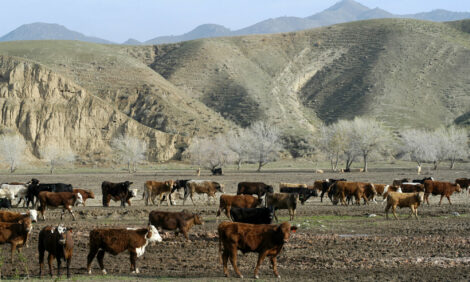



Tough Beef Market Pushes Live Cattle Exporter into Red
AUSTRALIA - An Australian live cattle export company says it has lost money on shipments in order to maintain customers in Asian markets, as it grapples with continuing high beef prices.According to ABC Online, operating conditions are unlikely to ease in 2018 for exporters, with an ongoing cattle shortage forcing up the price of livestock and cheaper frozen buffalo meat taking a significant market share in Indonesia.
While 2017 export numbers out of Australia are still being tallied, it is likely shipments were down on 2016.
This is despite a strong rally in December where seven vessels were loaded at the Darwin Port in just eight days, catering for large numbers of cattle coming off flood plains prior to the wet season.
Exporter Frontier International Agri, which has already sent two shipments this month, exported similar volumes in 2017 as it did in 2016 but it came at a cost.
Managing director Will McEwin said meeting the needs of individual customers, especially in Vietnam, had been a priority for the company.
"One customer in particular has been in development mode, so they have gone from a very minor player in 2016 to being the biggest importer in Vietnam in 2017 and we are their major supplier," he said.
"That partnership has helped us maintain volume but unfortunately for probably all exporters, maintaining volume has come at a cost of margin and that is where it has been very difficult.
"Some consignments we have lost money on.
"It is always that catch — you have customers that you want to maintain, you have vessels you need to fill and we needed to maintain our supply base.
"There are those factors that come into play and it has resulted in the fact that we have lost money on some consignments."
In August, ASX-listed exporter Wellard also pointed to high beef prices as the reason for the company posting a $77 million loss.
Mr McEwin said there needed to be an adjustment in the price of Australian cattle following this year's wet season, back to $3 a kilogram or less.
"There is a continuation of that disconnect between the Australian livestock price and what the market is prepared to pay overseas and we are sort of caught in the middle at the minute," he said.
"That's not just me talking that down but from an industry point of view there needs to be some pulling back of that domestic price.
"They are still reasonable prices as they are historically high levels but there needs to be some pulling back so we can at least maintain and hopefully build on what are now very low export volumes out of northern Australia to Indonesia and Vietnam.
"And for producers too, in the long term, to have live exporters as a long-term sustainable option to market their cattle into is a very good thing for them."
Indian buffalo meat continues to prove tough competition
According to a media report in Indonesia, the government will allow 31,000 tonnes of frozen buffalo meat to be imported from India this year.
The report stated the allocation of 31,000 tonnes was an "unrealised allocation" from 2017, with last year's total import of frozen Indian buffalo meat amounting to 55,000 tonnes.
Mr McEwin recalled import permits for the frozen buffalo meat for last year were about 85,000 to 90,000 tonnes.
"That might be wishful thinking that they are not going to reissue a new permit beyond what they did for last year," Mr McEwin said.
"But either way, 31,000 tonnes is clearly a large amount of beef and will have an impact on us just like last year's 50,000 tonnes did too."
He said increased market competition in both key markets, Indonesia and Vietnam, had been difficult to counter.
"We have had the Indian buffalo meat come in and attack a segment of the market that traditionally Australian beef would have supplied … which hasn't helped," he said.
"Pricing has been high and supply has been tight.
"Volumes again are down in Vietnam reflecting partly the fact that they have got other sources for live cattle from other neighbouring countries and also there is quite a bit of competition from other proteins such as pork and other offal in Vietnam."
TheCattleSite News Desk


